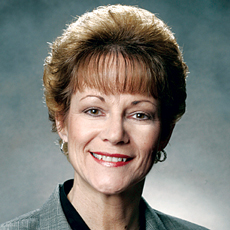
The post-Hurricane Irma disaster at a Florida nursing home, where multiple residents died from heat-related problems when the electricity went out, prompted a last-minute legislative add-on — allowing recording devices in residents’ rooms — to a Florida bill requiring back-up generators for long-term care facilities. It would be nice to say that this is the beginning of the use of “granny cams,” but it is not.
Granny cams have been around for a long time. Texas, New Mexico, Washington, Oklahoma, Utah and Illinois have already legislated on video cameras in residents’ rooms, while the Departments of Health for Virginia and Maryland promulgated guidelines on camera use at the direction of their legislatures. New Jersey’s Division of Consumer Affairs joined the chorus in the summer of 2017 by expanding to nursing homes an existing program that lends surveillance cameras to citizens for use in the homes of seniors to root out caregiver abuse.
Even as the demand for granny cams rises, many LTC facilities don’t know how to respond to a request from a resident, or their loved ones, to install video and other monitoring equipment.
Surveillance in LTC resident rooms is a very sensitive matter because of the information that can be captured on the cameras. Co-habitants of the room may not want surveillance, and medical care could be documented, making video distribution a HIPAA concern. Thus, facilities cannot continue to avoid this growing issue.
For some LTC facilities, the first response has been to prohibit use of in-room cameras. This is the wrong response because families may sneak a camera in and hide it. The facility’s discovery of those hidden cameras may not occur until damaging footage airs on the local news channels. This kind of disturbing scenario can be easily avoided with policies that allow facilities to take charge and require commitment from residents or their responsible parties to follow these policies.
The policies should include a strict prohibition on hidden cameras with an explanation that any recording made without proper written consent is a violation of residents’ rights, and use of the information can violate HIPPA restrictions on distribution of private health information.
Any request for installation of a granny cam should be in writing and should be accompanied by written consent from any residents sharing the room. Requests of co-habitants to limit the monitoring — such as no audio surveillance or a camera pointed only at the requesting resident’s bed — must be honored to preserve resident rights. A notice at the room’s entrance should also be posted, to alert anyone entering the room that they are under surveillance. The camera and any audio recording device should be stationary and placed in plain view.
The resident should be responsible for the camera purchase and maintenance costs, except for electricity. Because medical treatment is being recorded, the facility must take ownership of the recording and treat it as part of the medical chart. As with any chart documents, the recordings can only be reviewed or reproduced with the written consent of the resident or responsible party.
One concern raised by facilities related to ownership of the recordings is whether they are held responsible for their contents. The recording is no different from any part of a resident’s chart about which a facility should be aware.
From a practical perspective, the facility should want to know the contents of the recording before learning about it on the local news. Such awareness gives the facility the opportunity to ameliorate the situation or address any improper care before it becomes a regular practice. Indeed, management should want to root out improper care because the resident’s needs are paramount.
Finally, staff members should be notified immediately of recording devices and trained on how to respond. Any tendency to reduce interaction with residents in rooms with such devices should be discouraged, as all residents should have interactive and engaged caregivers, regardless of who is watching.
Long-term care facilities must be proactive with their responses to cameras in resident rooms. A strong policy giving the facility control over such an invasive practice is becoming increasingly necessary.
Nancy Reynolds, Esq., is a shareholder in LeClairRyan’s Roanoke, VA office and leader of the national law firm’s Long-Term Care Industry Team. She can be reached at: [email protected]




